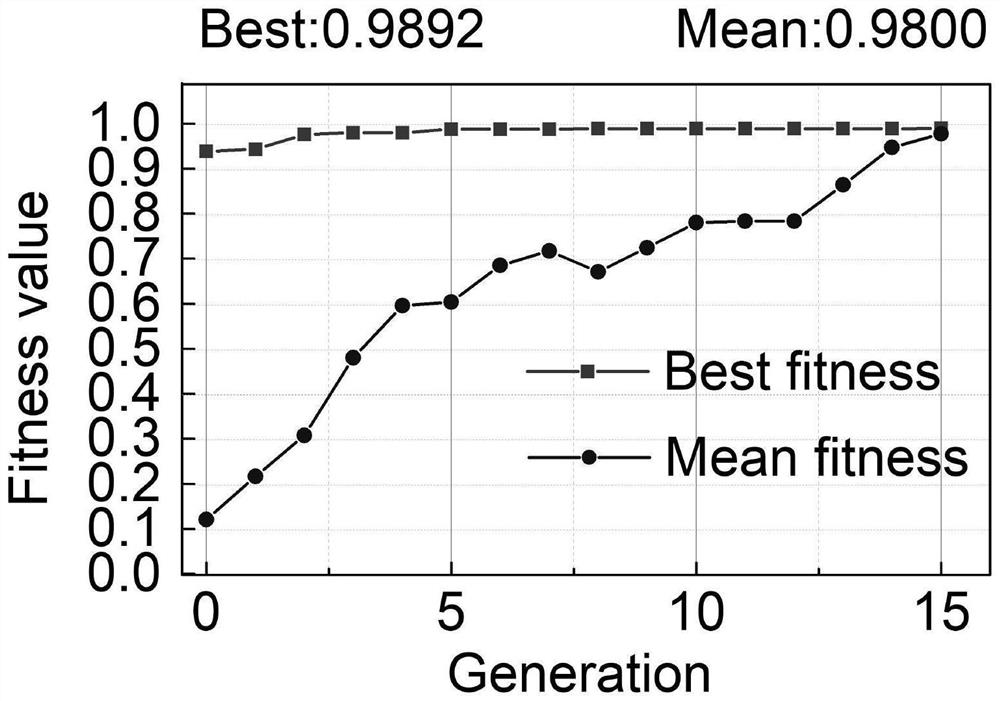Radar and infrared compatible stealth antenna shell optimization method
An optimization method and radome technology, applied in the field of radome, can solve problems such as inability to meet the needs of the battlefield, and achieve the effects of reduced infrared emissivity, strong practicability, and simple manufacturing process
- Summary
- Abstract
- Description
- Claims
- Application Information
AI Technical Summary
Problems solved by technology
Method used
Image
Examples
Embodiment 1
[0035] The invention provides a radar infrared compatible stealth radome optimization method. The stealth radome includes two layers of dielectric substrates, each layer of dielectric substrates is covered with copper metal patches, and the initialized frequency selection surface structure is as follows: figure 1 As shown, there are five layers in total, including: two layers of dielectric substrate (F4B material), three layers of metal patch (copper). Under this structure, the frequency selection characteristic of the microwave frequency band and the infrared low emissivity characteristic can be realized. Increase the metal duty cycle by adding tiny metal patches, thereby reducing the infrared emissivity, while maintaining the frequency selection characteristics of the microwave frequency band, increasing the area of the metal patch on the basis of the basic unit to increase the metal duty cycle, and then realize infrared emission rate reduction.
[0036] The optimization ...
PUM
 Login to View More
Login to View More Abstract
Description
Claims
Application Information
 Login to View More
Login to View More - R&D
- Intellectual Property
- Life Sciences
- Materials
- Tech Scout
- Unparalleled Data Quality
- Higher Quality Content
- 60% Fewer Hallucinations
Browse by: Latest US Patents, China's latest patents, Technical Efficacy Thesaurus, Application Domain, Technology Topic, Popular Technical Reports.
© 2025 PatSnap. All rights reserved.Legal|Privacy policy|Modern Slavery Act Transparency Statement|Sitemap|About US| Contact US: help@patsnap.com



